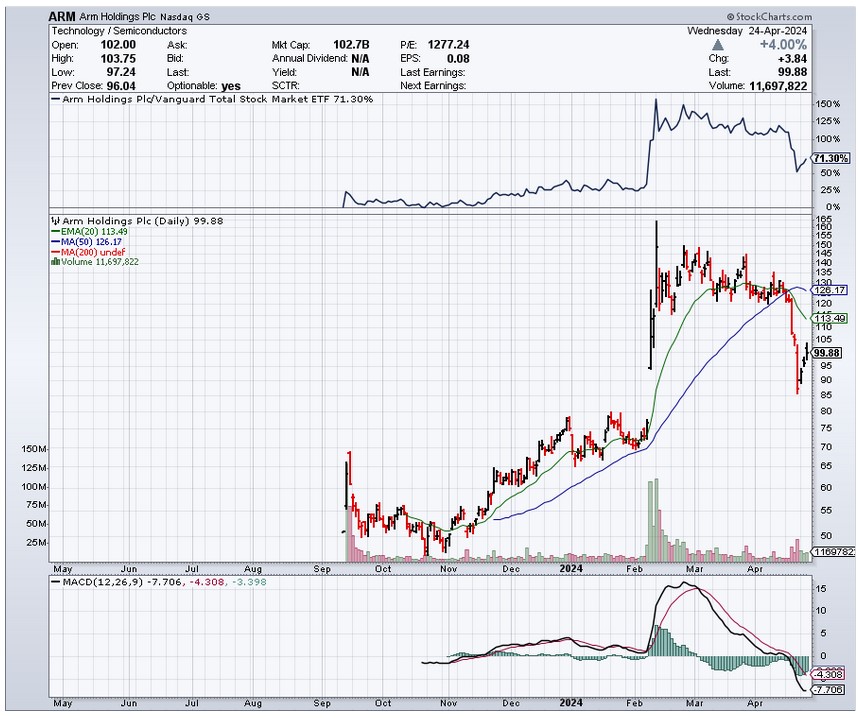(MSFT), (NVDA)
Forget a moonshot — Microsoft (MSFT) and OpenAI are shooting for the stars with their latest collaboration on a supercomputer so massive, it makes your standard tech project look like child's play.
Codenamed Stargate, this behemoth is poised to shake up the AI world with a projected investment ranging from $100 billion to $115 billion. The cosmos is the limit for this 2028 launch that isn't just a big deal — it's a mega deal.
Now, let's unpack this a bit.
Microsoft, a titan of tech, alongside AI maverick OpenAI, plans to pour more than $100 billion into Stargate. Why? To cut the cord with Nvidia (NVDA) and perhaps start a new chapter in the tech saga that every big player in AI is itching to rewrite.
And while the details are as tight as Fort Knox, we know this much: Stargate is the grand finale of a five-phase odyssey currently in its third act.
Imagine building something 100 times pricier than a massive data center — that's Stargate for you. This isn’t just a splurge; it’s an investment into what could redefine the boundaries of AI capabilities.
With such a hefty tag, the project's budget is set to dwarf Microsoft’s capital spending in 2023 by more than three times.
But there’s more brewing at Microsoft’s labs. Even before Stargate’s grand debut, there’s a plan for a smaller sibling supercomputer earmarked for 2026, part of the phase four prep work.
For the shrewd investors among us, this opens a golden door, particularly through Arm Holdings (ARM). Here’s why.
Think of Arm as the invisible giant of the tech world. They don't manufacture chips themselves, but their ingenious designs are the brains behind practically every smartphone on Earth and a whopping half of the world's CPUs.
They're basically the Michaelangelo of chip design – sculpting the blueprints for the technology that powers our digital lives.
But here's the real kicker: Arm's business model is a cash-generating machine. They license their designs to major chip manufacturers like Qualcomm (QCOM) and Samsung, who then pay Arm royalties every time a chip based on their design is produced. It's an impressive cash cow, with Arm raking in a steady stream of income via royalties as their tech infiltrates more and more devices.
Now, here's where things get even more interesting for Arm.
Microsoft's AI ambitions, fueled by this beast of a supercomputer, are a perfect match for Arm's expertise. Microsoft needs custom chips that can handle the immense demands of this project without draining the power grid.
And who makes the world's most energy-efficient chips for super complex tasks? You guessed it – Arm.
This isn't just a hunch.
Last November, Microsoft unveiled Azure Cobalt, its first AI-focused chip born from Arm's Neoverse CSS platform. This wasn't a one-off experiment – Cobalt proves Microsoft is shifting towards custom AI processors for better efficiency, a trend that likely continues with Stargate.
And that means dumping traditional, power-hungry GPUs in favor of Arm's sleek designs.
But it's not just about the electricity bill. Microsoft saw a performance jump of up to 40% with Cobalt – showing that efficient doesn't mean weak. With the massive energy needs Stargate will have, Arm's chips are looking like a winning bet.
Now, let's talk numbers — everyone's favorite part.
Arm's earnings are expected to skyrocket, with projections suggesting a near 45% annual growth over the next five years.
Starting from a fiscal 2024 earnings base of $1.19 per share, this growth could catapult earnings to about $7.63 per share.
Do the math with the Nasdaq-100’s forward earnings multiple, and you might see Arm's stock price soaring to $208 in five years — a sweet 69% jump from today.
But let’s spice this up a bit. If Stargate fuels an even higher demand for Arm's tech, these figures could be just the conservative baseline.
For investors looking to tap into the AI boom, grabbing a slice of Arm now might just be the smartest play before it rockets to new heights.
So, as we gear up for Stargate’s 2028 launch, keep your eyes on the stars — or in this case, the supercomputers and the chips that power them.
Microsoft and OpenAI are on to something big, and it’s not just about tech. It’s about shaping the future of AI. And who wouldn’t want a front-row seat to that?


